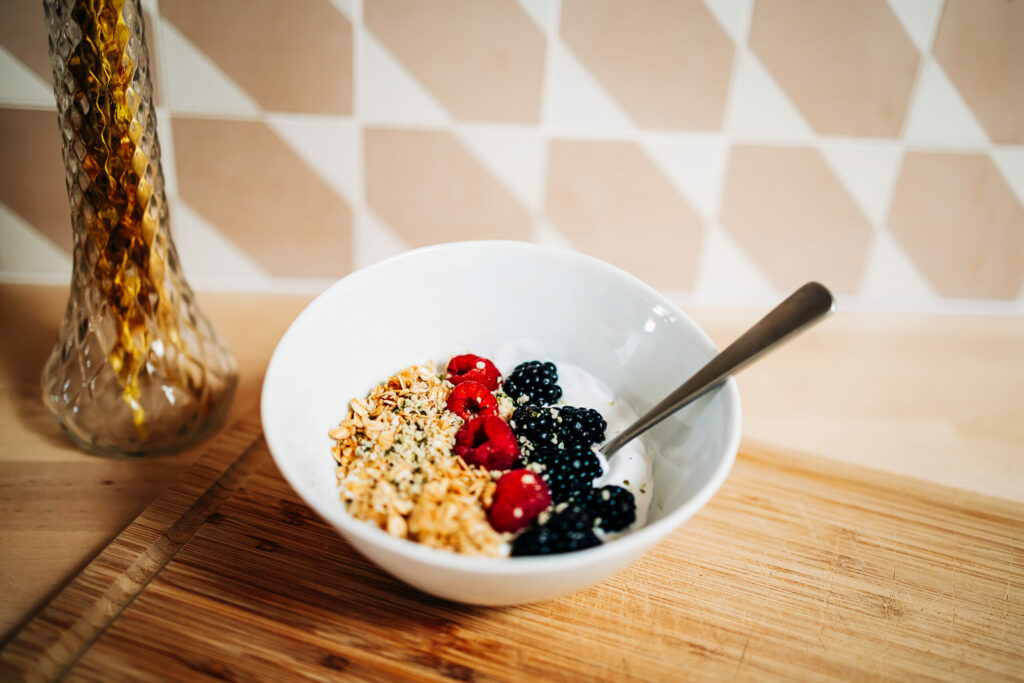Seed cycling for hormone balance

Learn how seed cycling supports hormone balance naturally. Discover which seeds to eat, when to eat them, and how to start this simple daily ritual. Not medical advice; just sharing some tips and as always, talk with your doctor before making any changes in your routine.
Hi friends! How are you? I hope that you’re having a lovely morning so far! Don’t forget to check out this year’s holiday guide gift for her. I had so much fun putting this one together!
Today, I wanted to talk about a natural hormone support strategy that’s been gaining popularity over the past few years: seed cycling!
It’s one of those gentle, food-based strategies that’s been trending in women’s wellness for good reason: it’s simple, inexpensive, and can make a noticeable difference in how you feel throughout your cycle.
Today, I wanted to chat a bit about what seed cycling is, how it supports hormone balance, and how to get started, including tips on what seeds to use, when to eat them, and how to make this an easy part of your routine.
Seed Cycling for Hormone Balance: What It Is and How to Start

What Is Seed Cycling?
Seed cycling is a natural practice that uses specific types of seeds to support the two main phases of your menstrual cycle: the follicular phase (first half) and the luteal phase (second half).
Each group of seeds contains nutrients that can help encourage healthy estrogen and progesterone levels, which are two of the key hormones that fluctuate during your cycle. By rotating the seeds based on your cycle phase, you’re providing your body with a steady rhythm of hormonal support.
Seed cycling can also be beneficial for women who are experiencing irregular cycles, perimenopausal changes, or symptoms of hormone imbalance like mood swings, acne, PMS, or fatigue.
How Seed Cycling Works
The idea behind seed cycling is that different seeds provide nutrients that naturally help balance hormones throughout the month:
During the Follicular Phase (Days 1–14):
Flax seeds and pumpkin seeds are used.
These seeds contain lignans and zinc, which can help support healthy estrogen metabolism and follicle development.
Flaxseeds also contain fiber and omega-3 fatty acids that can support detoxification and reduce inflammation.
During the Luteal Phase (Days 15–28):
Sesame seeds and sunflower seeds are used.
Sesame seeds provide zinc and lignans that help prevent estrogen dominance, while sunflower seeds are rich in selenium and vitamin E to support progesterone production and overall hormone balance.
If you’re not menstruating or your cycles are irregular, you can simply follow the moon cycle: start flax and pumpkin on the new moon and switch to sesame and sunflower on the full moon.
Benefits of Seed Cycling for Hormone Balance
While seed cycling isn’t a magic cure-all, many women report meaningful benefits when they stay consistent.
Here are some of the ways it can help:
Support natural hormone production and metabolism
May reduce PMS symptoms like bloating, mood swings, and breast tenderness
Can encourage regular cycles and ovulation
Can improve skin and reduce inflammation
Provides fiber, healthy fats, and minerals for overall wellness
Because it’s food-based, seed cycling is a gentle approach. It works best over time and pairs beautifully with other hormone-balancing habits like blood sugar balance, stress management, and quality sleep.
How to Start Seed Cycling
You can easily add seed cycling into your daily routine; no fancy supplements required!
Step 1: Choose Your Seeds
Follicular phase: ground flax seeds + raw pumpkin seeds
Luteal phase: raw sesame seeds + raw sunflower seeds
Step 2: Use the Right Amounts
Aim for about 1 tablespoon of each seed per day.
That’s 2 tablespoons total daily: one from each type in your current phase.
Step 3: Grind for Maximum Benefit
It’s best to grind flax and sesame seeds for better nutrient absorption. You can use a small coffee grinder and store them in the fridge or freezer.
Step 4: Add to Your Meals
Sprinkle seeds into smoothies, yogurt, oatmeal, or salads. You can even mix them into energy bites or protein puddings for an easy snack.
Step 5: Stay Consistent
It can take 2–3 cycles to notice changes, so consistency is key. Pair it with a balanced diet, hydration, and stress management for best results.
Tips for Success
Buy organic seeds when possible to reduce pesticide exposure. (I buy almost all of our nuts and seeds from NOW foods)
Store your seeds in a cool, dry place or the fridge to keep oils fresh.
Use reminders or a seed cycling chart to help you stay on track.
Combine seed cycling with other hormone-supportive practices like castor oil packs, red light therapy, and functional lab testing for a more holistic approach.


Who Can Benefit from Seed Cycling?
Seed cycling can be helpful for:
Women dealing with PMS, cramps, or heavy periods
Those experiencing perimenopausal or post-pill symptoms
Women with irregular cycles or fertility challenges
Anyone looking for a gentle, natural hormone-balancing habit
Because it’s based on whole foods, most women can safely incorporate seed cycling into their daily routine. If you have specific hormone-related conditions, talk to your practitioner before starting any new regimen.
Seed cycling is one of those simple wellness practices that can make a big difference over time. It’s affordable, accessible, and a great way to connect more deeply with your body’s natural rhythm.
Have you tried seed cycling? What was your experience like? Any tips to share?
xo
Gina
More: check out my post on functional lab testing or biohacking tools like castor oil packs, red light therapy, and detox support from my favorite brands like EquiLife and HigherDOSE.
Source link




